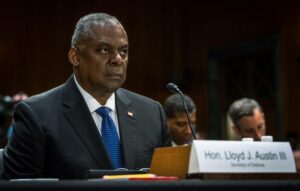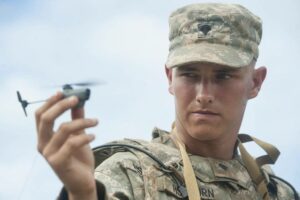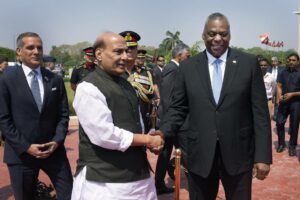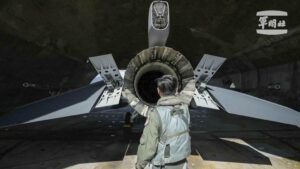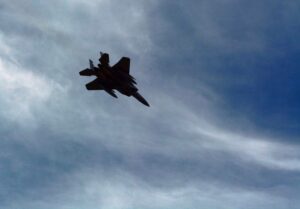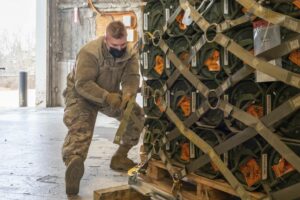WASHINGTON — A growing emphasis on international coordination is pushing U.S. defense officials to tack an additional “C” onto an acronym the Pentagon uses to officially label its multibillion-dollar connect-everything-everywhere campaign.
Joint All-Domain Command and Control, or JADC2, is increasingly being called “CJADC2” in public, with the prefix denoting the concept of “combined,” or the capacity of U.S. troops to successfully fight alongside forces from friendly nations. The stylistic choice may sound familiar; the Army and Air Force inked a two-year agreement in 2020 using the moniker.
The term is now resurgent — with broader scope — and reflects “how we are already working, and have been working for quite some time,” according to Margie Palmieri, the Pentagon’s deputy chief digital and artificial intelligence officer.
“We really wanted to send out the signal that we operate and fight with our allies and partners all the time,” Palmieri said at the NDIA Emerging Technologies for Defense conference this week in Washington. “And as we design capabilities, we’re finding that sharing information, sharing data, with our allies and partners and ensuring interoperability as we come together as a joint and combined force has to be baked into all of our solutions. We wanted that to be front and center.”
The Chief Digital and AI office leads the Global Information Dominance Experiments, meant to shape CJADC2, and has been tasked with establishing a data integration layer that would help collect findings from disparate sources and present them in a uniform, understandable manner.
Palmieri is not alone in her employment of the quadrisyllabic tongue-twister. Navy Adm. Chris Grady, the vice chairman of the Joint Chiefs of Staff; Air Force Lt. Gen. Mary O’Brien, a command, control, communications, computers and cyber director; and recently retired Army Chief of Staff Gen. James McConville have all rolled it out at recent events.
“If the Joint Warfighting Concept is the fabric of how we fight as a joint force,” Grady said last month, “then CJADC2 is the thread that runs through it.”
RELATED
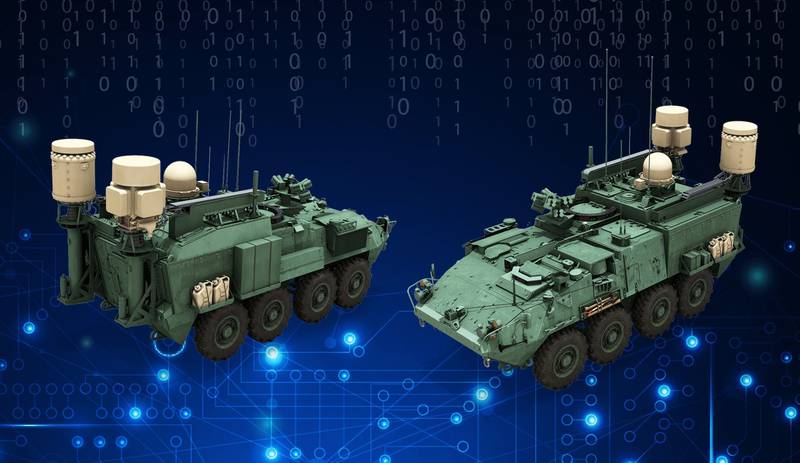
The Defense Department is pursuing CJADC2 as a means to understand and react faster on battlefields of tomorrow. By tying together forces and databases across land, air, sea, space and cyber, defense officials hope to outthink, outmaneuver and outshoot technologically advanced adversaries, namely China and Russia.
The military services are contributing in their own way and are folding in international participants. Australia and the U.K. were directly involved in the Army’s Project Convergence last year, and insights from the Navy’s Project Overmatch are being shared abroad in hopes of fostering global links, officials have said.
A key attribute of CJADC2 is the mission-partner environment, which allows data from a range of militaries to be collated, secured, shared and acted upon. The U.S. and U.K. in November agreed to jointly improve command and control while focusing on compatibility.
“The United States has command and controlled, and evolved its command and control, in operations over and over throughout history as the the strategic environment has changed, as our capabilities have changed, as our people have changed,” Palmieri said. “Now, for the 21st century, doing combined, joint and all-domain command and control is no different.”
The Defense Department’s fiscal 2024 budget blueprint allocated $1.4 billion for the connectivity campaign. Government documents describe the funding as necessary to “transform warfighting capability by delivering information advantage at the speed of relevance across” every environment.
Colin Demarest is a reporter at C4ISRNET, where he covers military networks, cyber and IT. Colin previously covered the Department of Energy and its National Nuclear Security Administration — namely Cold War cleanup and nuclear weapons development — for a daily newspaper in South Carolina. Colin is also an award-winning photographer.
- SEO Powered Content & PR Distribution. Get Amplified Today.
- PlatoData.Network Vertical Generative Ai. Empower Yourself. Access Here.
- PlatoAiStream. Web3 Intelligence. Knowledge Amplified. Access Here.
- PlatoESG. Automotive / EVs, Carbon, CleanTech, Energy, Environment, Solar, Waste Management. Access Here.
- PlatoHealth. Biotech and Clinical Trials Intelligence. Access Here.
- ChartPrime. Elevate your Trading Game with ChartPrime. Access Here.
- BlockOffsets. Modernizing Environmental Offset Ownership. Access Here.
- Source: https://www.defensenews.com/battlefield-tech/c2-comms/2023/08/31/why-jadc2-needs-yet-another-c-according-to-pentagon-officials/
- :has
- :is
- :not
- :where
- 1
- 11
- 2020
- 2024
- 21st
- 70
- a
- According
- across
- Additional
- administration
- advanced
- ADvantage
- Agreement
- AI
- AIR
- Air Force
- All
- allocated
- allows
- alone
- alongside
- already
- also
- an
- and
- Another
- ARE
- Army
- artificial
- artificial intelligence
- AS
- At
- Australia
- award-winning
- BE
- been
- being
- Billion
- broader
- budget
- by
- called
- Campaign
- capabilities
- capability
- Capacity
- Carolina
- Center
- Century
- chairman
- changed
- chief
- choice
- Chris
- cold
- collect
- combined
- come
- Communications
- compatibility
- computers
- concept
- Connectivity
- contributing
- control
- controlled
- Convergence
- coordination
- covered
- covers
- cyber
- daily
- data
- data integration
- databases
- Defense
- Defense Department
- delivering
- Department
- Department of Energy
- deputy
- describe
- Design
- Development
- different
- digital
- directly
- Director
- disparate
- documents
- doing
- Dominance
- emphasis
- employment
- energy
- ensuring
- Environment
- establishing
- events
- Every
- evolved
- experiments
- fabric
- false
- familiar
- faster
- fight
- finding
- findings
- focusing
- For
- Force
- Forces
- fostering
- friendly
- from
- front
- funding
- Gen
- Global
- Government
- Growing
- Have
- he
- help
- her
- history
- hope
- hopes
- How
- http
- HTTPS
- image
- images
- improve
- in
- increasingly
- information
- inked
- insights
- integration
- Intelligence
- International
- Interoperability
- into
- involved
- IT
- ITS
- james
- joint
- jpg
- Key
- Label
- Land
- Last
- Last Year
- layer
- Leads
- links
- manner
- May..
- means
- meant
- militaries
- Military
- Month
- namely
- National
- Nations
- necessary
- needs
- networks
- no
- now
- nuclear
- Nuclear weapons
- of
- Office
- Officer
- Officially
- officials
- on
- operate
- Operations
- or
- our
- out
- over
- own
- participants
- partners
- pentagon
- People
- photographer
- plato
- Plato Data Intelligence
- PlatoData
- present
- previously
- project
- public
- Pushing
- range
- React
- really
- recent
- recently
- reflects
- relevance
- reporter
- Rolled
- runs
- s
- Said
- scope
- Screen
- SEA
- Secured
- security
- send
- Services
- Shape
- shared
- sharing
- Signal
- Solutions
- some
- Sound
- Sources
- South
- South carolina
- Space
- speed
- Staff
- States
- Strategic
- Successfully
- Technologies
- term
- that
- The
- the joint
- their
- Them
- this
- this week
- Through
- throughout
- time
- to
- together
- tomorrow
- U.K.
- u.s.
- understand
- understandable
- United
- United States
- upon
- uses
- using
- wanted
- war
- washington
- Way..
- we
- Weapons
- week
- were
- which
- while
- why
- with
- working
- would
- year
- yet
- zephyrnet


